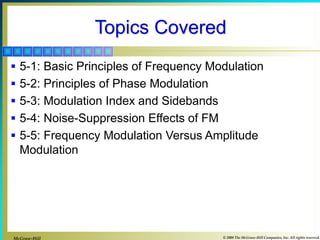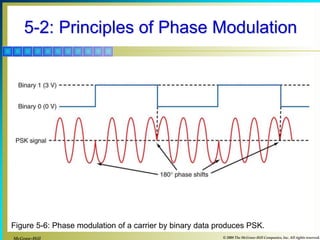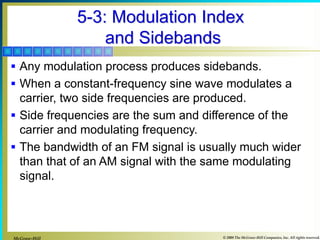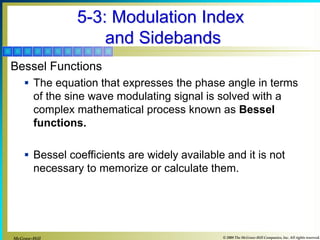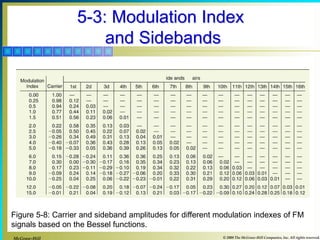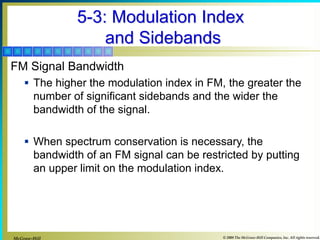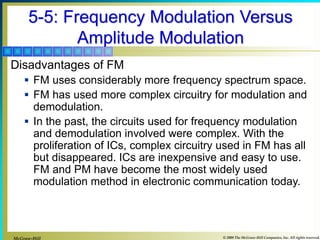This document summarizes key concepts about frequency modulation (FM) including:
- In FM, the carrier amplitude remains constant while the carrier frequency varies proportionally to the modulating signal amplitude.
- Parameters like frequency deviation, modulation index, and sidebands are discussed. Bessel functions are used to calculate sideband amplitudes.
- FM has advantages over AM for noise suppression because transient noise spikes do not affect the frequency modulated signal and can be eliminated through limiting in receivers. Preemphasis of high frequencies is also used to counteract noise.

